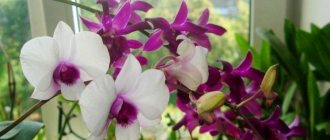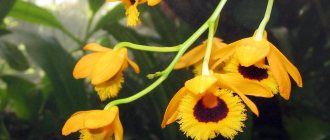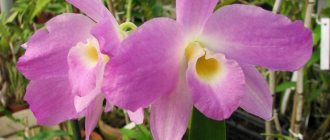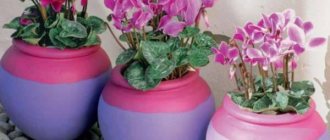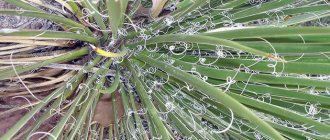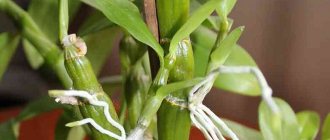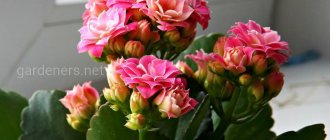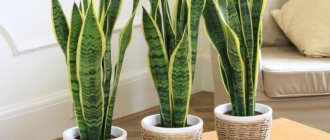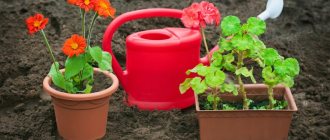Description
Dendrobium is one of the most numerous genera in the Orchid family.
It unites over 1000 species of plants of amazing beauty. These epiphytic flowers have much more differences than similarities. Often, even experienced flower growers and botanists find it difficult to determine the species. The height of the plant varies from millimeters to several meters. Some have thick cylindrical stems, others have spindle-shaped stems, others have reed-like stems, and others are actually swollen pseudobulbs. There are evergreen and deciduous Dendrobiums.
Flowers differ in shape and size, not to mention color. In nature, there are not only blue and black Dendrobiums, but the rest of the palette is presented in full. Despite such diversity, it is flowers that perform the function of unification. All species have a common feature - lateral sepals fused at the base.
Dendrobiums are characterized by long-lasting flowering at home. Some of them also have pleasant aromas. Plants confidently lead the popularity ranking of indoor flowers. Caring for them is not easy. However, it requires, first of all, not so much skill as accuracy and attention. Compliance with the requirements allows not only experienced, but also novice flower growers to achieve impressive success.
Growing
Dendrobium does not need spacious containers. It is quite comfortable in a small plastic or clay pot with a good drainage layer, a hanging basket or on a block.
Transplantation is usually carried out every 3–4 years. Overgrown roots indicate the need for the procedure. It is best to move the plant to a larger pot in the spring, being careful not to cover the buds located at the base of the shoots.
Several methods can be used to propagate the plant. First, carefully cut the bush so that each individual rhizome has at least 3 pseudobulbs. This method can be used once every 4 years.
Secondly, wait for 2.5 cm roots to appear on the side shoots. Separate the shoots with a knife and plant them in a special substrate. The flower will require “greenhouse conditions” for six months. You can create a mini-greenhouse at home from a plastic bag (if the plant is small, then just place it in a bag of a suitable size).
And finally, Dendrobium is a representative of Orchids, capable of propagation by cuttings. To do this, the stem is cut into pieces with 2 internodes on each. They are planted in sphagnum for 3–4 months for rooting and leaf formation. Then they are planted in separate pots.
Dendrobium transplant
Dendrobium nobile hybrids
Dendrobium species are replanted in two cases - when the roots outgrow the pot or when the base of the delicate bark decomposes. Most often, both processes coincide in time, so transplantation is carried out every 2-3 years. The optimal time for this treatment is February or March, when the plant has just woken up after wintering.
For Dendrobium nobile, the substrate should always be airy with large air spaces retained. Transplantation is carried out to replace the substrate (every 2-3 years) or when the plant grows out of the pot. These are the rules that apply when watering with the recommended low mineral content (distilled water, rain water or water from a reverse osmosis filter). However, if irrigated with tap water, the orchid needs to be replanted every year.
Transplantation is carried out in the spring, immediately after increased root activity is noticed. The flower pot used should be as small as possible - in the case of annual replanting (and if the plant does not grow quickly), use the same one - replanting in this case involves replacing the substrate with a new and permeable one. Plants do not split into individual pseudobulbs - the minimum division is a group of 3-4 fused pseudobulbs. Do not use garden soil for planting any tropical orchids!
The substrate is a mixture that dries quickly and does not retain much water. It is recommended to use pine bark with medium granulation (1-1.5 cm) with the addition of charcoal, perlite or foamed clay and a little fibrous peat. The substrate may also consist of pine bark or coconut shavings alone without other additives. After transplantation, the plants are not watered for 10 days.
When replanting dendrobium, you should remember that its roots should not completely occupy the pot. At least some of them need to have access to light, so place the orchid in the substrate so that at least some of the roots lie close to the sides of the pot.
For stability we attach
Dendrobium nobile after transplantation
Orchid propagation
Dendrobium can be propagated by cuttings - to do this, you need to spread the adult cutting on moss and cover it. New shoots will appear from the internodes. However, this is not the best way.
Most often, an orchid is propagated from a pseudobulb that has not yet bloomed. It must be cut off, placed on the moss, tied in a plastic bag and left. After some time, new shoots will appear from the bulb.
Another way is the simplest. Separate the so-called keiki, which grow from internodes on old shoots (pseudobulbs), from the mother plant. For a young plant to survive, it must produce at least one pair of leaves and some healthy roots. This lasts about six months. Separate the “ribbon” from the mother plant and plant it in a new pot. You can see what dendrobium babies (cakes) look like in the photo in the gallery at the bottom of the article.
Plant diseases and pests
If you care for your dendrobium correctly, it is rarely attacked by pests. However, it happens that it is damaged by red spider mites and mealybugs. The most common cause is overwatering the orchid.
To combat them, you need to dry the substrate, treat the orchid with an anti-sucking insecticide and normalize the watering conditions.
How Dendrobium nobile blooms
Dendrobium hybrid in nature
Dendrobium in natural conditions Dendrobium farmerii Dendrobium-farmerii
Fertilizing dendrobium is the key to abundant flowering
Dendrobium blooms for several months
Dendrobium nobile blooms profusely
Dendrobium babies - reproduction by keiki
Dendrobium nobile reproduction by keiki Dendrobium trigonopus photo
First steps after purchase
The purchase of Dendrobium should be preceded by a thorough inspection of the leaves. Specks, stripes, thickenings are evidence of the presence of pests. The plant should be transported to a new place of residence in secure packaging. Even short-term hypothermia is fraught with the dropping of flowers and buds. Transplantation into “fresh” soil and amputation of dried roots must be carried out immediately. At least 3-4 days should pass before the first watering. Since the symptoms of fungal and viral infections are hidden at first, the flower requires a 2-week quarantine to avoid mass infection. The plant does not have to be placed on the windowsill immediately. During the adaptation period, Dendrobium can be placed a meter from the window.
Secrets of success
Dendrobium is photophilous. Some species can tolerate direct sunlight without harm to their health. However, most representatives of the genus prefer to grow in light shade.
The temperature regime of an Orchid depends on its belonging to a particular species. Plants that love cool weather do well in the warm season at temperatures up to 18°C during the day and 15°C at night. Daytime winter temperature should not exceed +12°C, nighttime - 8°C. For heat-loving species, optimal summer temperatures are + 25°C during the day, + 20°C at night. In the winter months - 20 and 18°C, respectively. All members of the genus, without exception, benefit from regular ventilation.
Dendrobiums require high air humidity. It is recommended to place pots in pallets. It is also permissible to finely spray the air near the plant, but so that not a single drop falls on either the leaves or flowers.
Abundant watering during active growth (warm shower or immersing the pot in water) upon the onset of the dormant period is reduced to rare water procedures as the earthen clod dries completely. It is recommended to use soft, settled water at room temperature.
Feeding with special fertilizers is carried out only during the growing season and completely stops at the end of flowering.
Dendrobium bloom
Peduncle of dendrobium nobile before flowering.
Wintering and the dormant period of dendrobium ends in February, when the plant begins to produce new shoots growing directly from the pseudobulbs. These are usually new seedlings that can be replanted. Immediately after you notice sprouts, you can move the orchid to a warmer, brighter location and return to watering. However, with fertilizer, wait about three weeks. Short floral shoots appear at many nodes along the entire mature pseudobulb. Flowering usually lasts two to three months.
Dendrobium nobile blooming
After flowering, when all the flowers fall off, the flower shoots can be cut off next to the pseudobulb, but this has only aesthetic value. As with most sympodial orchids, these orchids usually do not bloom a second time from the same pseudobulbs—flower stems only grow from new mature pseudobulbs in a given season. Sometimes old pseudobulbs can repeat flowering on lower nodes, but this does not happen often. Old dendrobial pseudobulbs can be used for vegetative propagation of the plant. For this purpose, parts of the pseudobulbs should be laid on a layer of spongy, but not wet, peat moss, and tightly closed in a plastic bag or plastic box. If necessary, the water should be replenished periodically (for example, once a month), while maintaining the appropriate humidity level. After a few months (sometimes even a year), new specimens can grow from the nodes.
